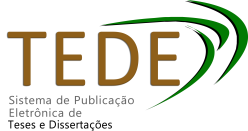| ???jsp.display-item.social.title??? |


|
Please use this identifier to cite or link to this item:
http://localhost:8080/tede/handle/tede/183| ???metadata.dc.type???: | Dissertação |
| Title: | EVOLUÇÃO DE GALÁXIAS EM SUPERGRUPOS DE AGLOMERADOS DE GALÁXIAS EM BAIXO REDSHIFT |
| ???metadata.dc.creator???: | GOIS DA SILVA, FILIPE |
| ???metadata.dc.contributor.advisor1???: | CORREIA OGANDO, RICARDO LOURENCO |
| ???metadata.dc.description.resumo???: | Supergrupos são ”grupos de grupos” e/ou aglomerados de galáxias com sub-estruturas que poderão colapsar em um aglomerado. Como aglomerados possuem características particulares, tais como uma sequência vermelha bem definida e concentração de galáxias early-type, é importante entender como tais propriedades surgiram, que fatores — tal como pré-processamento nessas estruturas — levaram a essa configuração. Existem poucos estudos sobre Supergrupos (e.g., Brough et al., 2006; Sengupta et al., 2022; Smit et al., 2015). Além disso, em geral os estudos focam em analisar um Supergrupo por vez. Neste contexto, vamos estudar um conjunto de Supergrupos em uma faixa significativa em redshift (z<0,5), expandindo a lista desses objetos, e entender suas características comuns no que tange evolução e distribuição de populações estelares. Identificamos Supergrupos no catálogo de aglomerados de galáxias do RedMaPPer usando os 5 000 graus quadrados do DES nas bandas griz. Analisamos a evolução de galáxias nestes usando cores, entendendo de que forma fatores como o raio e a massa do Supergrupo podem influenciar estas populações. Para encontrar Supergrupos, buscamos por sobredensidades de aglomerados em bins de 0,1 em redshift até z=0,5 e em pixeis com largura de 5 cMpc em RA e Dec. Usamos a correção K de Blanton e Roweis (2007) para ajustar as magnitudes em todas as bandas e um Modelo de Mistura Gaussiana (GMM) para separação de populações em galáxias azuis e vermelhas. Encontramos 8 candidatos a Supergrupos com 0,1<z<0,4 e massa mínima total de 0,5—1,8x10¹⁵ M☉. Os aglomerados membros têm mgap entre a BCG e a quarta galáxia mais brilhante menor que 2,5, indicando formação recente ou em curso. Há uma correlação entre a fração de galáxias vermelhas e o raio tanto nos aglomerados individuais, quanto nos Supergrupos. Os aglomerados centrais têm, em seu interior, uma fração de vermelhas maior que os aglomerados satélites. Da mesma forma, os Supergrupos mais massivos têm uma fração de vermelhas maior que os menos massivos em todo o raio. Assim, nossos resultados indicam que a taxa de quenching pode estar relacionada à massa do Supergrupo e que as galáxias sofrem pré-processamento nas sub-estruturas. |
| Abstract: | Supergroups are “groups of galaxy groups” and/or galaxy clusters with substructures that might collapse into a single cluster. Since galaxy clusters have singular characteristics, such as a well-defined red sequence and a concentration of early-type galaxies, it is important to understand how these properties came to be and which factors — such as preprocessing in these structures — might have led to this configuration. There are few studies about Supergroups (e.g., Brough et al., 2006; Sengupta et al., 2022; Smit et al., 2015). Besides, the studies generally focus on the analysis of one Supergroup at a time. In this context, we will study a set of Supergroups over a significant redshift range (z<0.5), expanding the list of these objects, and understanding their common characteristics concerning galaxy evolution and stellar population distribution. We identified Supergroups in the RedMaPPer galaxy clusters catalog using data from the 5,000 sq. deg. DES footprint in the griz bands. We analyzed the galaxy evolution inside them using colors, understanding how factors, such as the radius and the mass of the Supergroup, might influence these populations. To find Supergroups, we searched for cluster overdensities in redshift bins of 0.1 out to z=0.5 and with 5 cMpc wide pixels in RA and Dec. We used the K correction of Blanton and Roweis (2007) to correct the magnitude in all bands and a Gaussian Mixture Model (GMM) to separate populations in blue and red galaxies. We found 8 Supergroup candidates with 0.1<z<0.4 and minimum total mass of 0.5—1.8x10¹⁵ M☉. The member clusters have mgap between the BCG and the fourth-brightest galaxy of less than 2.5, indicating recent or ongoing formation. There is a correlation between the fraction of red galaxies and the radius in individual clusters, as well as in Supergroups. The central clusters have a greater fraction of red in their interior than the satellite clusters. Similarly, more massive Supergroups have a higher red fraction than less massive ones across all radii. Thus, our results indicate that the quenching rate could also be related to the Supergroup’s mass and that galaxies undergo preprocessing in the substructures. supergroups; galaxy:clusters; galaxy:evolution |
| Keywords: | supergrupos;galáxias:aglomerados;galáxias:evolução |
| ???metadata.dc.subject.cnpq???: | ASTROFISICA EXTRAGALACTICA::GALAXIAS |
| Language: | por |
| ???metadata.dc.publisher.country???: | Brasil |
| Publisher: | Observatorio Nacional |
| ???metadata.dc.publisher.initials???: | ON |
| ???metadata.dc.publisher.department???: | Divisão de Programas de Pós-Graduação - DIPPG |
| ???metadata.dc.publisher.program???: | Programa de Pós-Graduação em Astronomia |
| Citation: | GOIS DA SILVA, FILIPE. EVOLUÇÃO DE GALÁXIAS EM SUPERGRUPOS DE AGLOMERADOS DE GALÁXIAS EM BAIXO REDSHIFT. 2023, 105 páginas da Dissertação do Programa de Pós-Graduação em Astronomia Observatório Nacional, RJ . |
| ???metadata.dc.rights???: | Acesso Aberto |
| URI: | http://localhost:8080/tede/handle/tede/183 |
| Issue Date: | 19-Dec-2023 |
| Appears in Collections: | Dissertações de Mestrado PPGA |
Files in This Item:
| File | Description | Size | Format | |
|---|---|---|---|---|
| FILIPE GÓIS DA SILVA.pdf | 28.79 MB | Adobe PDF | Download/Open Preview |
Items in DSpace are protected by copyright, with all rights reserved, unless otherwise indicated.




